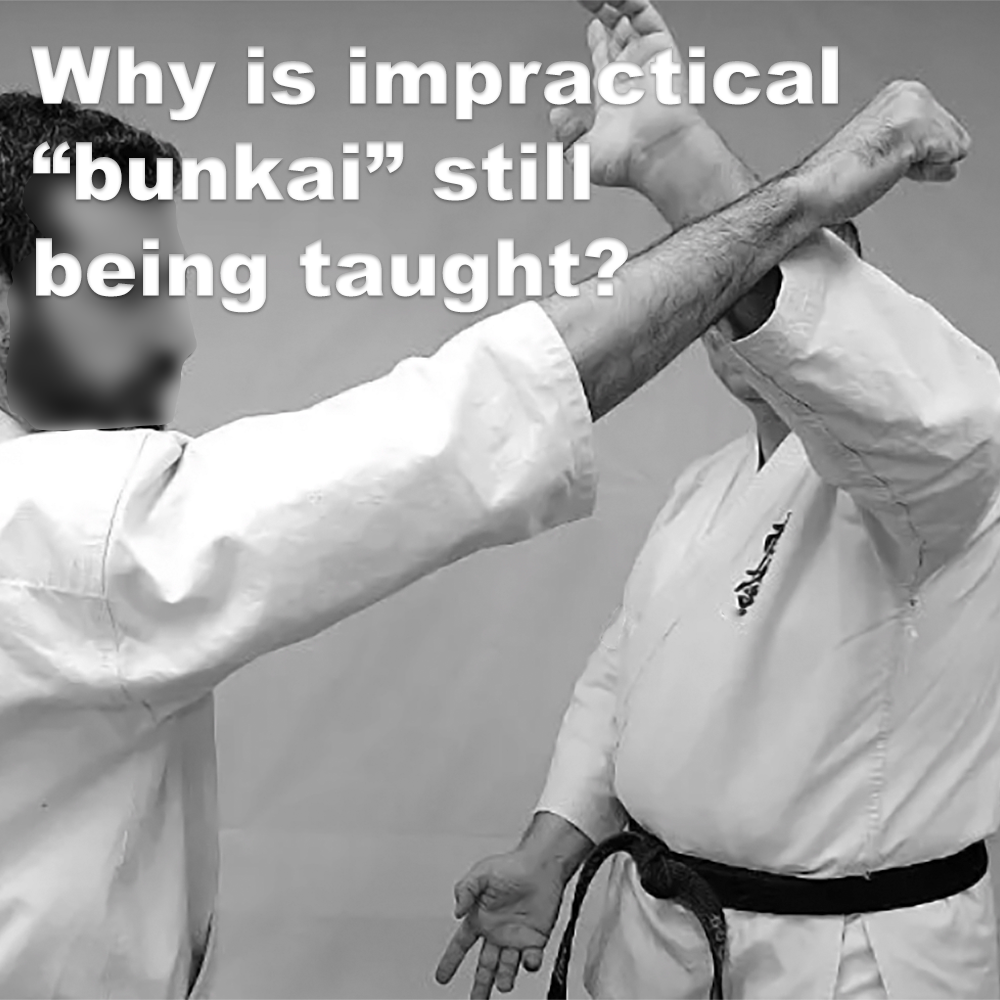
For many systems of karate, which rely heavily on kata, “bunkai” – 分解 (breakdown, analysis, disassembly) and “Oyo” – 応用 (application) is of the utmost importance.
.
The past masters handed down the kata as an encyclopedia of their form of martial art, the ‘styles’ of the day. Even though many karate systems share kata, or at least variations on kata, their interpretation of these forms can be very different. And today, many of these interpretations are highly impractical and unrealistic. Why is that?
.
What makes bunkai (I use the term to represent both analysis and application) impractical and unrealistic, is firstly not defining its context. Is it relevant to sport, demonstration, show, or self-defense etc.?
.
For me, the application of bunkai has to fit a real world scenario. Therefore what makes some applications unworkable in this example, include highly unlikely types of attacks, unrealistic distancing, overly complex application sequences, application that is entirely reliant on partner compliance and unrealistic expectations of your abilities under pressure.
.
While the movement patterns include individual techniques that may work in demonstration, the way practitioners enter or connect the movements are awkward, would fail under pressure and resistance, and could very well lead to injury or worse if applied that way in a real-life self-defense situation.
.
Just because a technique meets the solo-template does not mean that it will be effective in the context of a self-defense situation.
.
One of the downsides of modern martial arts is that people don’t spend enough time refining the basics anymore. What I mean by this is that, practitioners try to perfect the look of the technique, instead of trying to understand the movement, the principles, and real-world function behind the technique. They then build upward on poor foundations and never move on from a ‘perfect’ looking block and punch.
.
There is no ‘fits all circumstances’ set bunkai application. This is why it is vitally important when analyzing applications, that the movement in its entirety is considered.
.
You have to give thought to how many different ways you can use a technique or series of techniques? Forget the nomenclature, understand the principle being conveyed and consider how many different kinds of attacks you can use specific techniques against? As long as an application would appear to sensibly adhere to simple common sense criteria, then it can be considered sound in principle.
.
If the application only works against someone who is barely responding to the stimuli, then it’s a good indication that the technique has not been pressure tested. If it hasn’t passed pressure testing, then it’s unlikely to prove itself useful in the context it has been created for. How many times have you watched a demonstration or video with the attacker not showing any resistance whatsoever?
.
There HAS to be resistance, increasing resistance, with unpredictability and failure demonstrated and practiced. You have to show what would happen when the attacker is resisting, pulling, pushing, twisting, grabbing, moving to a different position.
.
As martial artists, we should be students of reality, to critically think, to ask ourselves “would this really work?”. Its seams to me if a student is taught HOW to analyze applications and the principal being conveyed, instead of just performing a specific technique, then bunkai will be more practical and realistic.
.
A good training methodology is supposed to be all about enabling you to use the movements of karate effectively and not just to show your demonstration skills.
.
